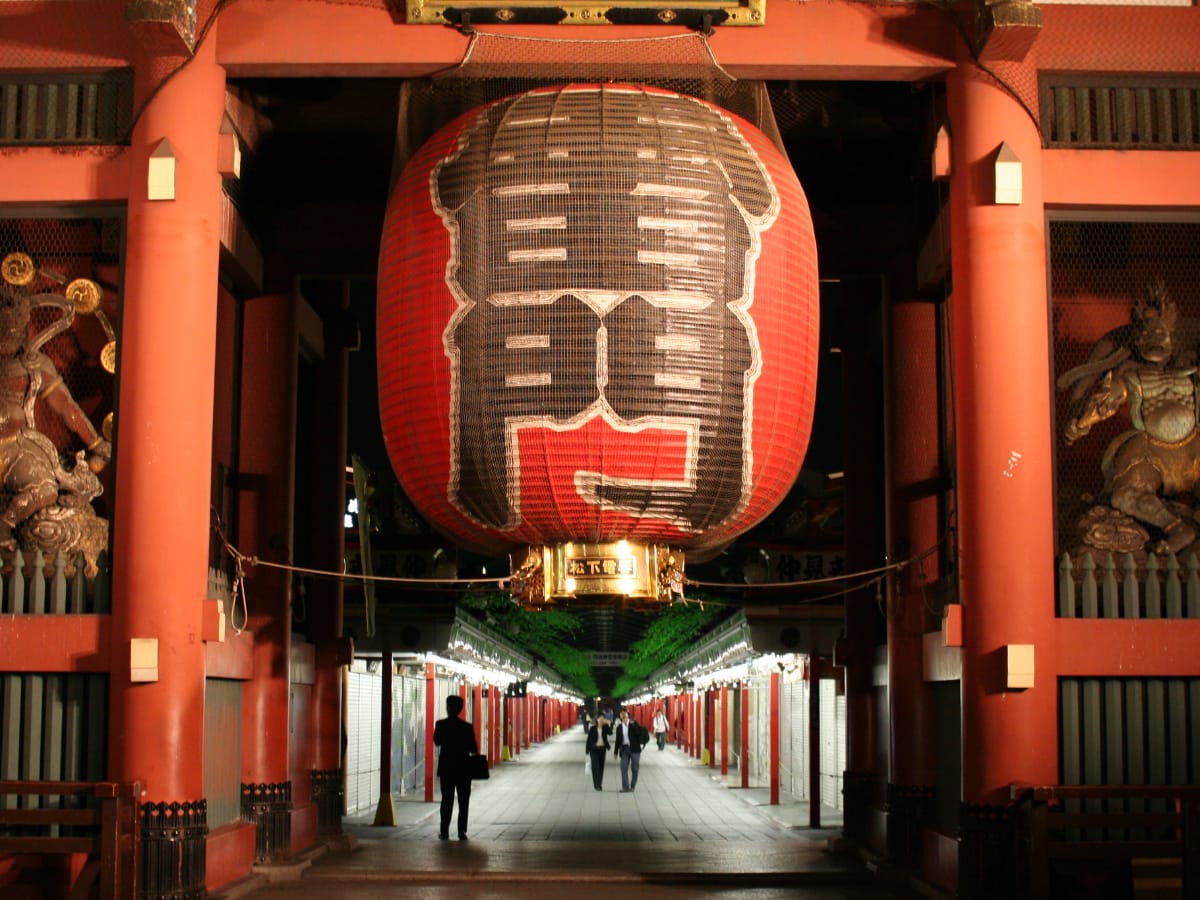- Tags:
- Asakusa / Kaminarimon Gate / Sensōji Temple
Related Article
-

Lost in Translation On Your Tokyo Visit? These Student Volunteers Want To Help!
-

We Visit Tokyo’s New Vegan Convenience Store to Vedge Out on Vegan Goodness
-

Watch Vintage Footage of Famous Sights in Tokyo from 1915
-

New Tokyo Ninja Bar Replaces Darts With Shuriken And Blowguns
-

Tokyo Rickshaw will have you swooning over their risqué new promotional video
-

Japanese photographer captures rare shot of Asakusa as a timeless winter wonderland



With social distancing measures keeping everyone away from one another, this lockdown is the perfect time for a make-over. What better time to restart than now, so that when the shut-in finally lifts, we can all shock each other with our new looks.
Makeovers aren’t just for people though, as a fair share of beloved landmarks have taken the break from the hoards of people to have a revamp of their own. One such popular location is Sensōji Temple’s Kaminarimon gate located in Asakusa Tokyo.
Best known for being the capital’s oldest Buddhist temple, and with its famous large red gates and the Nakamise-dōri market which lines the way up to the main complex buildings, the grounds see more than 30 million visitors each year.
With fewer people wandering around this old downtown area of Tokyo, the temple has been fitted with a new chōchin lantern.
Lantern replacements normally take place roughly every ten years, with the previous lantern having been fitted at the gate back in 2013. New decorations at the temple are usually met with large celebrations as a number of ceremonies are undertaken to fully “dedicate” the ornaments to the resident buddha and kami, this time, however, the streets were empty and the new lantern was assembled without any cheers from a zestful crowd.
Dick Thomas Johnson | © Flickr.com
The new paper lantern, produced by a long-established Kyoto based manufacturer, stands at 3.9 meters tall with a girth of 3.3 meters and a weight of approximately 700kg. Each replica bears the kanji characters of Kaminarimon (雷門) on the front, whilst the back is printed with the official but less widely known name of the gate, Fūraijinmon (風雷神門). The lanterns are made to be collapsable so that during festivals at the temple, the lantern can give way to objects that pass under the gate.
The Kaminarimon gate was originally built nearer to Komagata during the Heian period in 941 by Taira no Kinmasa, however, it was relocated to its current location in 1635, where it is believed to have received the statues representing the gods of wind and thunder, Fūjin and Raijin, hence the official gate name of Fūraijinmon.
During Japan’s long feudal era, which saw a number of battles and conflicts, the gate was repeatedly destroyed or burnt down by fire. The most recent destruction happened in 1865 when it was burned to the ground, after which, the gate was not rebuilt for almost a whole century.
The gate we see today was rebuilt in 1960 by Konosuke Matsushita, ninety-five years after the 1865 fire. Matsushita was the founder of Panasonic (formerly known as Matsushita Denki Sangyō Kabushiki-gaisha), and his monetary donation and help to the rebuild the gate is commemorated by a plaque bearing an abbreviated form of his company’s original name; ‘Matsushita Denki’.
OiMax | © Flickr.com
The gate is home to four statues, two of which are the namesakes behind the gate, Fūraijinmon, which translates literally as ‘the gate of the wind and thunder gods’.
Fūjin, the god of wind is placed on the east side of the front of the gate, whilst Raijin, the god of thunder is located on the west side of the gate's front. At the rear of the gate, the Buddhist god Tenryū flanks the east whilst the goddess, Kinryū, is situated on the west side of the gate.
During the fire of 1865, the two statues of Fūjin and Raijin were nearly destroyed in the flames, with only the heads surviving. Alongside the 1960 reconstruction of the gate, the statues were also restored and returned to their location guarding Sensōji Temple.
Following the restoration of the Kaminarimon gate in 1960, the large chōchin lantern that greets visitors as they make their way to Sensōji Temple has been replaced six times. This time, the lantern was removed from its hangings on the 10th of March, so that preparations could be made for the arrival of its replacement, which went ahead on April 17th.
The decision to update the lantern earlier than normal (seven years rather than ten) was made so that the unveiling of the new ornament would coincide with the Tokyo 2020 Olympic Games, however, following the state of emergency and current lockdown measures put in place by the Japanese government, the launch ceremony was cancelled and the new lantern was put up in an almost eerily silent Asakusa district.
With present quarantine measures keeping us at home, and with no signs of the lockdown lifting any time soon, there is no telling when we may get to set eyes upon Sensōji Temple’s iconic Kaminarimon Gate again. However, the cultural landmark waits patiently to welcome us all with its new bright red lantern hanging below.